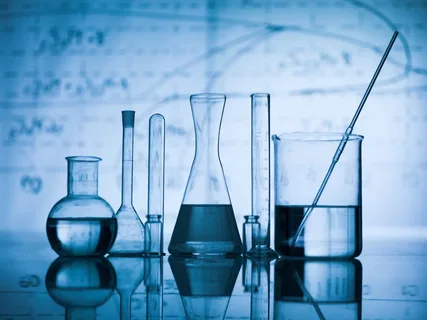New Chemicals

New materials in the chemical industry
Modern chemists create new materials every day and improve the characteristics of existing ones. The development of this science is extremely important for all areas of human existence. Chemical products are actively used in medicine, cosmetology, food, clothing production, etc.
Examples of new technologies
Technologies of new materials are necessary for the development, synthesis and extraction of initial data in the industrial production of critical chemical products.
Today, the most rapid improvement of consumer properties of the product is carried out. There is a decrease in the cost of production, the indicators of environmental safety of products increase.
New technologies and materials in microelectronics are used to create modern electronic computers. Systems are being developed that ensure the transmission of energy over any distance, it becomes possible to control the course of accurate technological processes.
Modern household electronic equipment, national economic and defense equipment is manufactured. A highly sensitive technique is emerging, which is necessary for monitoring the surrounding world and controlling radiation levels.
New building materials are actively used in the construction of buildings. They are also used in furniture, engineering, automotive and other industries.
The high quality of modern materials guarantees a long service life of structures, cars and trucks, special technical equipment, etc. Their use helps to avoid corrosion, deformation of objects and structures.
Modern ceramic materials have become very popular in the machine-building, space and tool industries.
With their help, the production of:
- heat-stressed elements of engines;
- wear-resistant friction pairs;
- Filters;
- bandages;
- thread drivers;
- thermocouple covers;
- blade;
- stamping;
- measuring instruments, etc.
Ceramic products are associated with the manufacture of bioimplants, military equipment and personal protective equipment.
The creation of new materials with special properties is the discovery of magnetic-soft amorphous, nanocrystalline and microcrystalline alloys. These include electrical steels, magnetostrictive compounds, which are based on iron.
Also, scientists are engaged in obtaining wear-resistant powder alloys that retain heat. These materials are used by:
- space industry;
- electrical engineering;
- metallurgy;
- engineering;
- Instrumentation;
- medical industry, etc.
Development of new materials for the chemical industry
The development of new materials involves the manufacture of heavy-duty raw materials. Modern specialists produce devices with the help of which high hydrostatic pressures are created. Scientists determine the conditions for the synthesis of ultra-strong and ultrahard material and its optimization, investigate the physical, mechanical and chemical properties of the synthesized raw materials, which depend on the conditions of its extraction. The performance characteristics of the new material are established and the areas of its most productive application are identified.
Professionals of the chemical industry are engaged in the organization of pilot-industrial and serial production of superhard and ultra-hard objects using fullerones. These new high-quality materials are actively used in the manufacturing industry and in the production of drilling machines. This raw material is necessary for the production of blade equipment, rocket and space equipment.
The creation of new materials in chemistry includes the development of biocompatible raw materials, the main difference of which is its improved medical and technical properties. It is characterized by a mosaic hydrophilic-hydrophobic surface, carbon and fluorine-containing coating. This also includes hybrid material, in the creation of which biological structures such as molecules and cells were used. The field of application of the raw materials in question is medicine, food and petrochemical industries.
The use of new materials in chemistry involves the use of catalysts, which are:
- Heterogeneous;
- homogeneous;
- biocatalysts.
With the help of their application, experts are trying to solve the issue of saving resources and energy.
The raw materials in question are used by any industry:
- Chemical
- Oil refining
- Pharmaceutical
- Food
- energy, etc.
With their help, intermediate products, monomers, fertilizers, medicines, vitamins, plant care products, etc. Catalysts are necessary when gaseous and liquid emissions of production, energy, transport systems are cleaned.
Chemistry and new materials are indispensable for the existence and labor activity of modern society. Today, membranes are used for water treatment and purification. With their help, the separation of the liquid and gaseous medium occurs. There are processes:
- microfiltration;
- Ultrafiltration;
- nanofiltration;
- reverse osmosis;
- gas separations;
- electrodialysis;
- Hemodialysis;
- Dialysis;
- first time.
Membranes are actively used in the chemical industry. Thanks to them, chlorine and caustic are produced, chemicals are concentrated, the process of regeneration and purification of the solvent, detergent solution and oil takes place. In the food industry, raw materials are used in the manufacture of dairy products, wines, various juices, etc. They are involved in clarification and desalination. Biotechnology and the medical industry resort to the use of membranes in the sterilization of all kinds of solutions, in genetic engineering, in the process of oxygenation of blood, etc.
To date, data banks of modern structures and properties that are characteristic of classes of chemical products are being formed. Molecular and supramolecular structures are constructed, the synthesis process and technological features of production work are developed and optimized.
- Arts
- Business
- Computers
- Giochi
- Health
- Home
- Kids and Teens
- Money
- News
- Recreation
- Reference
- Regional
- Science
- Shopping
- Society
- Sports
- Бизнес
- Деньги
- Дом
- Досуг
- Здоровье
- Игры
- Искусство
- Источники информации
- Компьютеры
- Наука
- Новости и СМИ
- Общество
- Покупки
- Спорт
- Страны и регионы
- World


